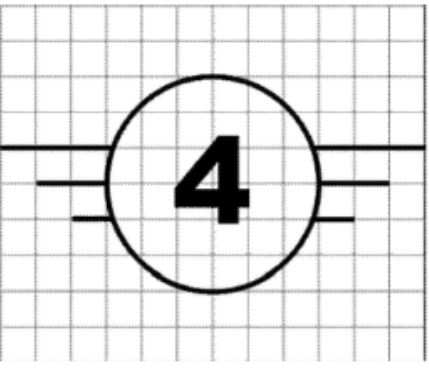In order to maintain some consistency between classes I’m going to cover the following areas of the Delegated Regulation requirements for each class in the same order:
Weight / Dimension / Speed / Height
Controllability / Design / Power / Battery Alerting
Noise Emissions / Serial ID / Lighting
Remote ID
Geo-Awareness
System Intervention and Follow-Me
Data Link Failure Behaviour
User Manual and Box Content
Class Marking Symbol
The following symbol will be used to show this class of drone
Weight / Dimension / Speed / Height
The Maximum Take-Off Mass must be no more than 25kg.
There is no maximum size.
There is no maximum speed.
There is no maximum attainable height.
Controllability / Design / Power / Battery Alerting
The drone will need to be safely controllable and maneuverable by an RP following manufacturer instructions and under all anticipated operating conditions including failure of one or more systems.
There are not Design / Power / Battery Alerting requirements.
Noise Emissions / Serial ID / Lighting
There are no Emissions / Serial ID / Lighting requirements.
Remote ID
There are no Remote ID requirements.
Geo-Awareness
There are no Geo-Awareness requirements.
System Intervention and Follow-Me
There are no System Intervention or Follow-Me requirements however the aircraft must not have any automatic control modes except for flight stabilisation (with no direct effect on the trajectory) and lost link assistance.
Data Link Failure Behaviour
There are no Data Link Failure Behaviour requirements.
User Manual and Box Content
The User Manual shall clearly identify:
Class
Mass (with reference config) and MTOM
Allowed payloads (mass, dimensions, interfaces and restrictions)
Equipment and S/W to control UA Remotely
Behavior in case of loss of data link
Clear Operational instructions
Limitations (including meteorological, day/night)
Risks related to UAS operation
Maintenance instructions
Troubleshooting Procedures
The box shall contain an EASA Info Notice detailing laws etc. applicable to the drone.
Based on the above my interpretation is that these drones are more likely to be traditional uremote-controlled aircraft such as a fixed-wing Super Cub or Spitfire. However, it’s important to know that drones placed on the market prior to these regulations can’t be claimed to fall into any of these Classes. They fall under a different set of rules that have been set up to cover the use of legacy drones.
Small Print: These posts are a summary only, include my personal interpretation and are not intended to be a replacement for reading the actual rules.


